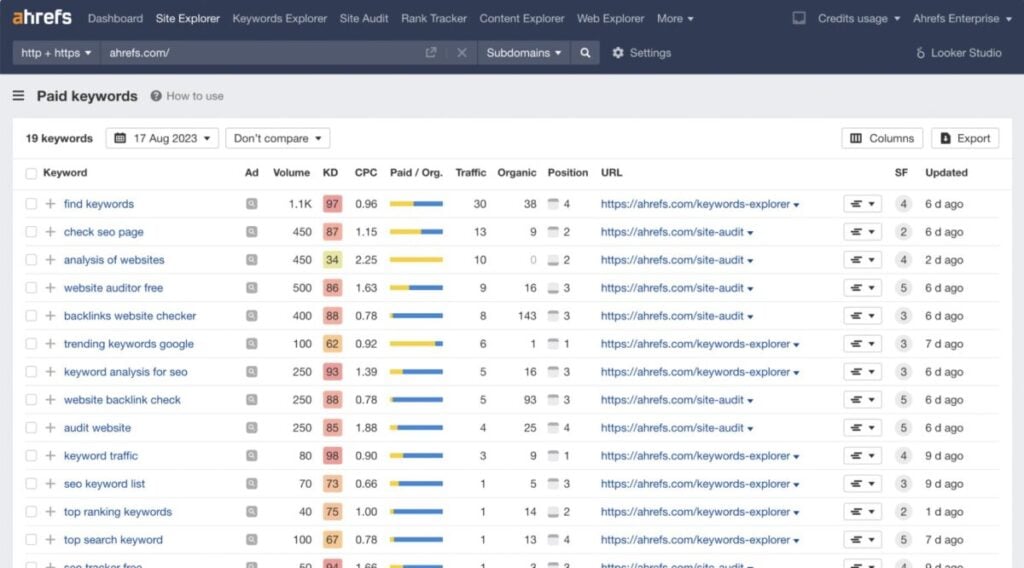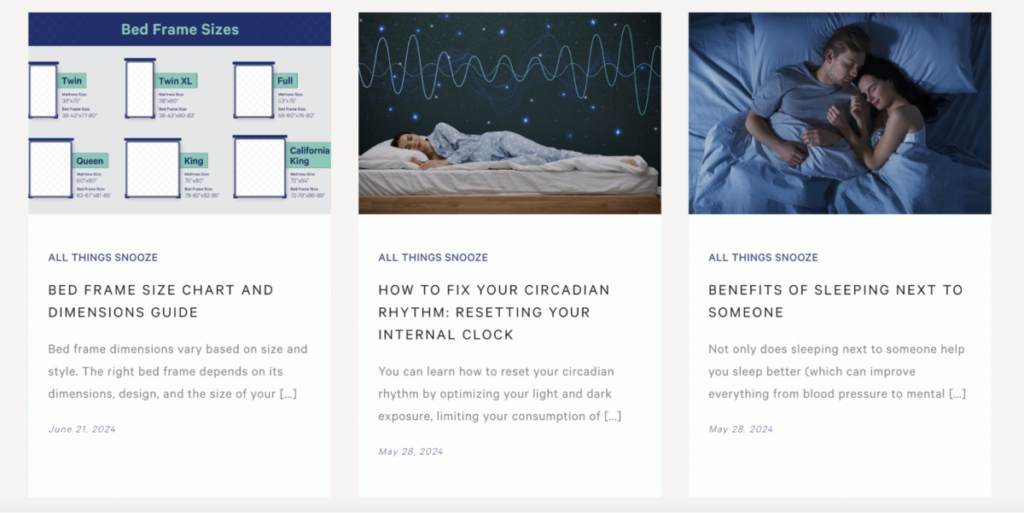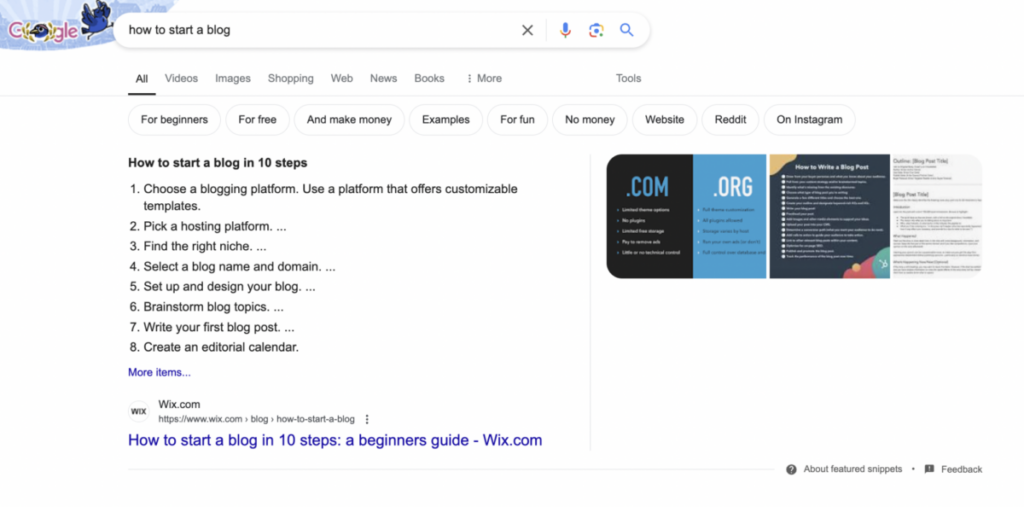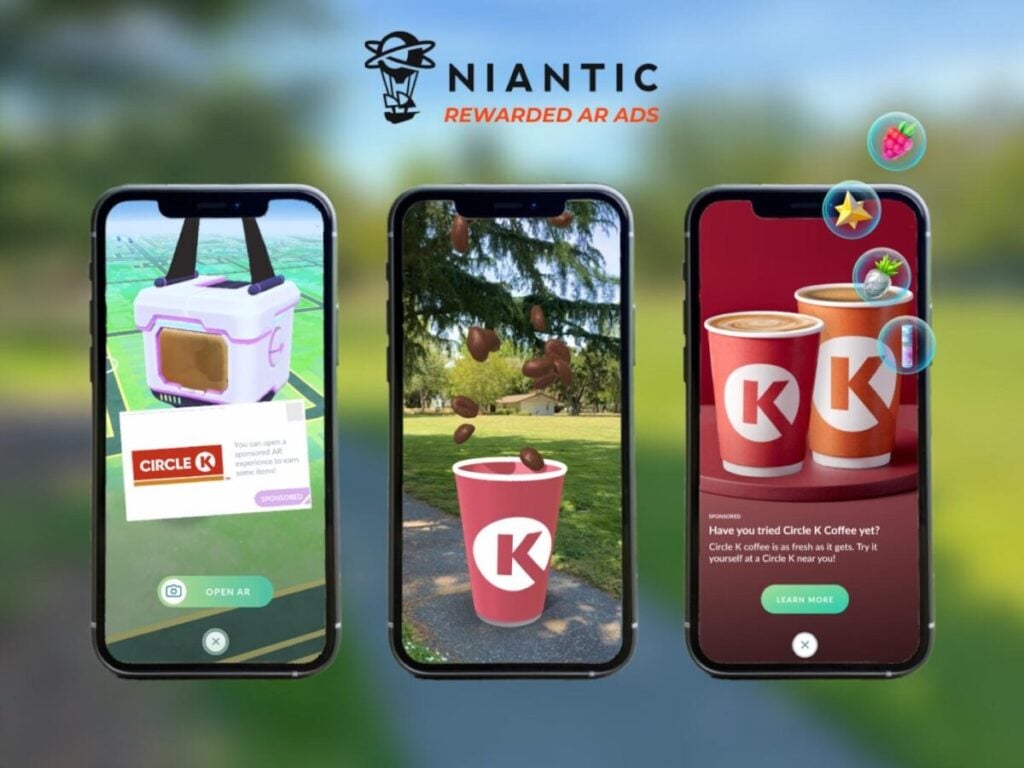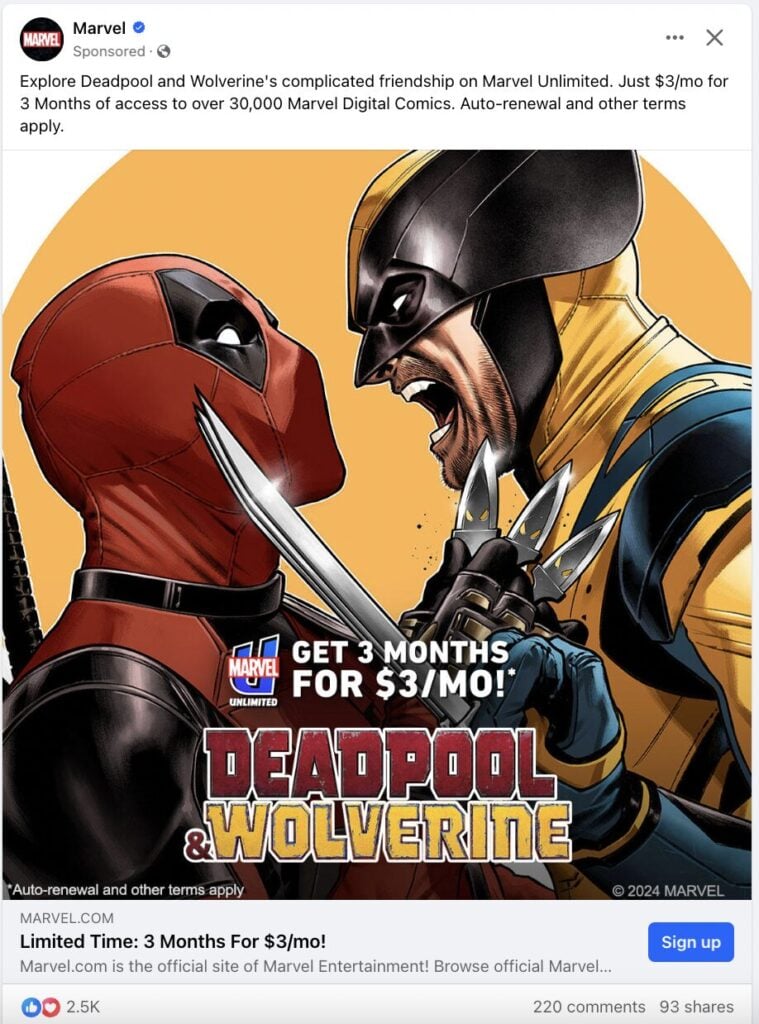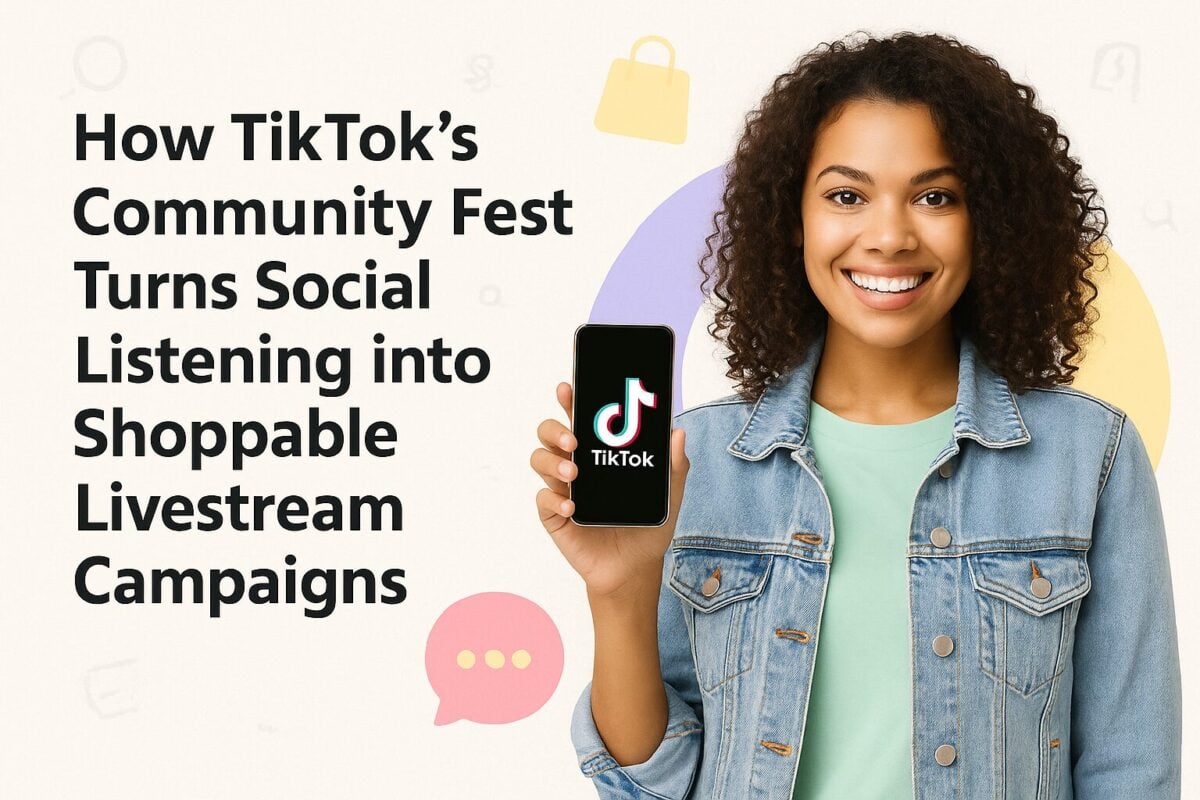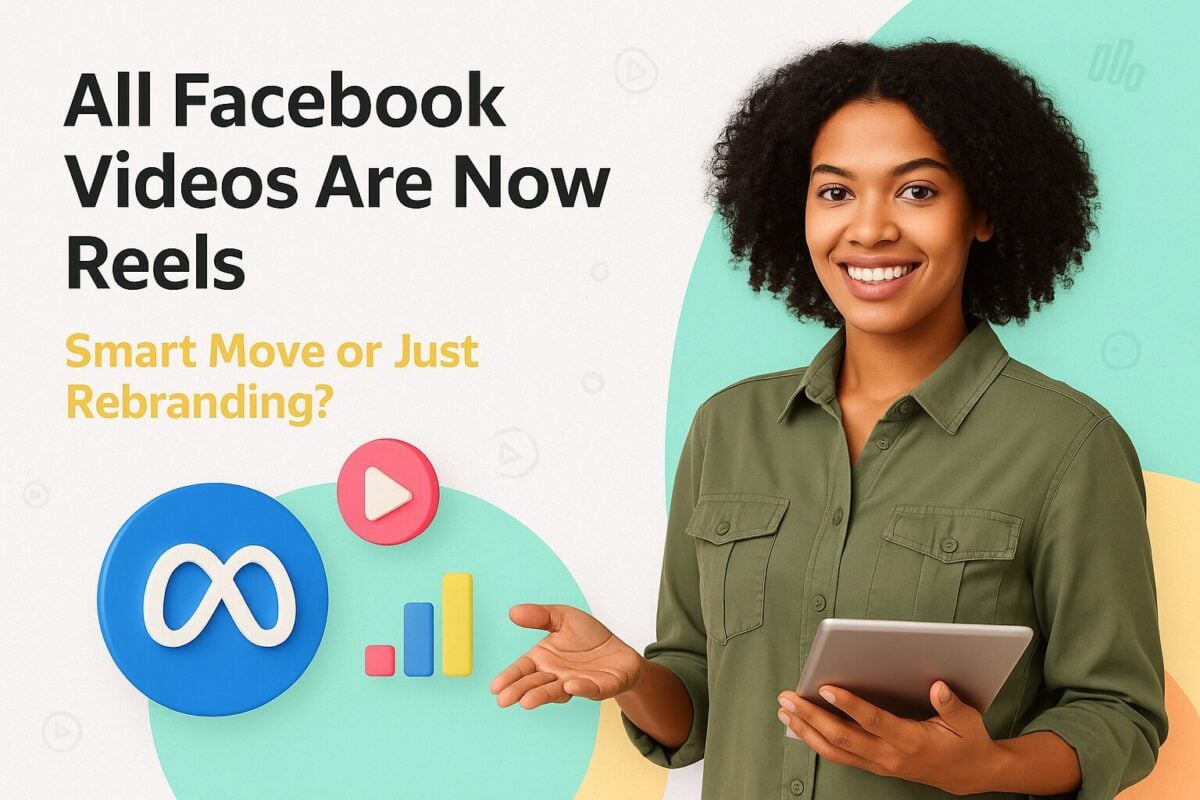Learning about effective offline and digital marketing strategies may give you an idea of what you need to do. But it’s only through examples that you can learn how to put those strategies into action. That’s why we’ve put together this extensive list of effective marketing strategy examples to fuel your business growth.
What are the Key Components of a Marketing Strategy?
Before we get down to the details, it’s important to start off strong with a solid foundation of what your strategy should include. Every brand marketing strategy should have the following key components.
Marketing Mix (4 Ps of Marketing)
Your marketing mix includes four key elements that play a vital role in the success of your strategy. These elements are called the 4 Ps of Marketing and include—product, price, place, and promotion.
- Product: Think about your product and what it does. Who will benefit from your product? What makes it different from other products in the market?
- Price: Strategically price your products to make them accessible to the target audience while contributing to your bottom line. Consider factors such as your competitors’ price range and your target audience’s spending habits.
- Place: Decide where to sell and distribute your products based on where your audience is so you can effectively reach your target market.
- Promotion: Finally, you need to think of the best strategies to promote your products and services. This element of your marketing mix may include traditional approaches such as word of mouth, print ads, and billboards. It may also include digital marketing tactics such as social media marketing, email marketing, PPC ads, and more.
Marketing Objectives
When developing your marketing strategy, you need to set clear objectives to focus on. Do you want to raise brand awareness, drive more sales, promote a new product, or reach new audiences? These objectives will shape the rest of your strategy—from the approaches you take to the metrics you use to measure success.
Make sure your goals are SMART—specific, measurable, achievable, relevant, and time-bound. For example, your goal for a specific campaign may be to increase your sales from social media by 4% within the next six months.
Competitive Analysis
A thorough analysis of your competitors is crucial to get a better understanding of how to differentiate yourself in the market. Look into their positioning and strategies to see what’s working and what isn’t. Use those insights to replicate and improve on the strategies that work or develop something completely unique to set yourself apart.
Make use of various competitor analysis tools to get a comprehensive look into your competitors’ strategies. Check out what content and posts are performing well, where they’re getting traffic, which keywords they’re targeting, and more.
Segmentation, Targeting, and Positioning (STP)
It’s important to realize that successful marketing strategies don’t take a one-size-fits-all approach. They’re highly specific and targeted to appeal to specific types of people. This makes it crucial to carefully segment your audience and target them with impactful messaging that resonates with them.
Are you looking to target budget shoppers with a more affordable line of products, for instance? Or are you planning to position your brand as the go-to source of high-quality products for babies for parents who want nothing but the best, regardless of the cost?
Segmentation will help you fine-tune your targeting efforts so you can successfully align your positioning according to each segment. If you don’t have existing customer segments in place, you can even use AI customer segmentation tools to simplify the process.
Budgeting
Finally, it’s time to think about how much you’re willing to spend on your marketing strategy and allocate your resources accordingly. This will determine some of the specifics of your marketing campaign.
For example, if you’re looking to drive sales on a small budget, you may want to use product seeding campaigns and have influencers review your products. In this case, you’ll need to focus your budget on influencer marketing platforms, agency fees, packaging and shipping, etc., instead of spending the money on advertising costs.
Examples of Effective Marketing Strategies
Now that we’ve nailed down the basics, we can get into the specifics. Here are some of the best examples of effective marketing strategies to inspire you.
1. Content Marketing
Content marketing is the use of content to promote your brand’s products and services. Here, “content” may refer to anything from blog posts and webinars to social media posts and infographics. The main goal of this tactic is to establish value with the help of content. So you may share informative content, how-to guides, in-depth reports, entertaining media, and more as a part of your content marketing strategy.
Casper, the mattress company, uses content marketing to position themselves as an authority on “all things sleep.” Their blog tackles topics related to sleep health and provides practical guides and how-to tips to add value to their audience.
Meanwhile, their YouTube channel focuses on entertaining content that would appeal to the platform’s user base. The brand creates a variety of engaging videos ranging from bedtime story-reading sessions with celebrities like Halle Berry to creative story-based promo videos. They also have a “Casper Sleep Channel” where they put together soothing sounds to help people fall asleep.
2. Local Marketing
Local marketing involves promotion strategies that specifically target consumers who live nearby. It may include approaches such as localizing your messaging to resonate with local consumers, targeting specific keywords and locations with paid ads, adapting your products to better appeal to the local audience, and so on.
Since this type of marketing targets specific locations, it’s popularly used in digital marketing for small businesses that want to drive customers to their brick-and-mortar stores. However, it can also be leveraged by larger brands as they expand to various locations or try to ramp up their marketing efforts for certain regions.
For example, Nike’s “Nothing Beats a Londoner” was a campaign specifically targeting people in London. The promo video featured cameos from influential Londoners and was shot on recognizable areas such as Dalston and Brixton. This helped the brand put together a campaign that truly resonated with the target audience. Remarkably, searches for Nike products were up 93% in London after the ad’s launch.
3. Social Media Marketing
We’re all familiar with social media marketing as it’s one of the most popularly used digital marketing tactics today. It involves leveraging social media platforms to promote your brand’s products and services and engage your brand community. Depending on your goal, you may use social media to share engaging content, interact with your audience, activate your brand community, and deliver targeted ads.
Ultimately, social media marketing involves helping you establish a strong presence on your chosen platform. And no one does it better than Duolingo. The language learning app has gained internet fame over their hilarious and often unhinged social media content, primarily shared through TikTok.
The brand participates in trending conversations and creates content related to viral memes and topics. They use a mascot, Duo, to represent the brand on social media and showcase a unique personality that appeals to millennials and Gen Z humor. From trends like “brat summer” to relatable POVs to short comedy skits, the brand manages to put together creative videos with their signature unhinged humor.
As a result, Duolingo has been able to connect with these two demographics, helping them amass over 12.5 million followers on TikTok alone. This also makes them an excellent example of Gen Z marketing strategies in action.
Most of their videos generate hundreds of thousands of views, with some of them regularly getting views in the millions. The following video, for instance, has 2 million views.
@duolingo dont sleep on pose 28 #dresstoimpress #roblox #duolingo ♬ Vote yodelinghaley 5 stars - haley sharpe
4. Event and Sponsorship Marketing
Event marketing involves a brand putting together an event whereas sponsorship marketing involves a brand sponsoring an event or its participants. This helps get the brand name in front of a relevant audience and promotes real-time engagement. It can be executed in a number of ways depending on the type of industry and the goal of the campaign.
For instance, Intel is known to sponsor esports events and gaming teams to appeal to a highly relevant audience of people who use computers. One of their partnerships is with EPIC.LAN, a UK-based community that puts together gaming events and esports tournaments.
That’s #EPIC42 with @IntelUK done!
Huge thanks to this amazing bunch of people who made the event happen and to all of you for continuing to support the LAN.
See you back in Kettering this October for more!@OverclockersUK | @ASUS_ROGUK pic.twitter.com/5Jd16HVJAz
— EPIC.LAN UK Gaming & Esports Events (@EPICLAN) July 22, 2024
5. Influencer Marketing
Influencer marketing involves partnering with influential people to expand your reach and achieve your campaign goals. Depending on your goal, your influencer marketing strategy may involve sponsored posts, reviews, gifting and product seeding campaigns, content partnerships, and product partnerships. Affiliate partnerships and event marketing are also popular ways to work with influencers.
Most brands leverage influencers for their creativity and influence, which means they make use of their content creation capabilities to connect with the influencers’ followers. For example, Disney invited YouTube influencer and tech reviewer, Marques Browniee (19.2 million subscribers) to the Disney Imagineering studio to try out their “secret project” called the HoloTile.
The YouTuber gave his viewers a demo of the 360-degree floor and explained how it works as well as some potential uses for it. This video has garnered over 7.3 million views within a span of three months.
6. Email Marketing
Email marketing is one of the go-to digital marketing tactics to engage customers and nurture leads. It involves sending emails to promote your products, share updates, provide valuable information, and essentially keep your audience engaged. You could use this strategy to share discounts, announce a sale, provide product recommendations, remind people to take action, promote your latest blog post, and more.
For Grammarly, their email marketing strategy focuses on retaining existing users. They provide weekly updates on each user’s writing performance, showing stats such as productivity, mastery, and vocabulary. They also include the number of suggestions made by the app and the total errors it has detected. This helps establish the app’s value, potentially encouraging the user to keep using Grammarly.
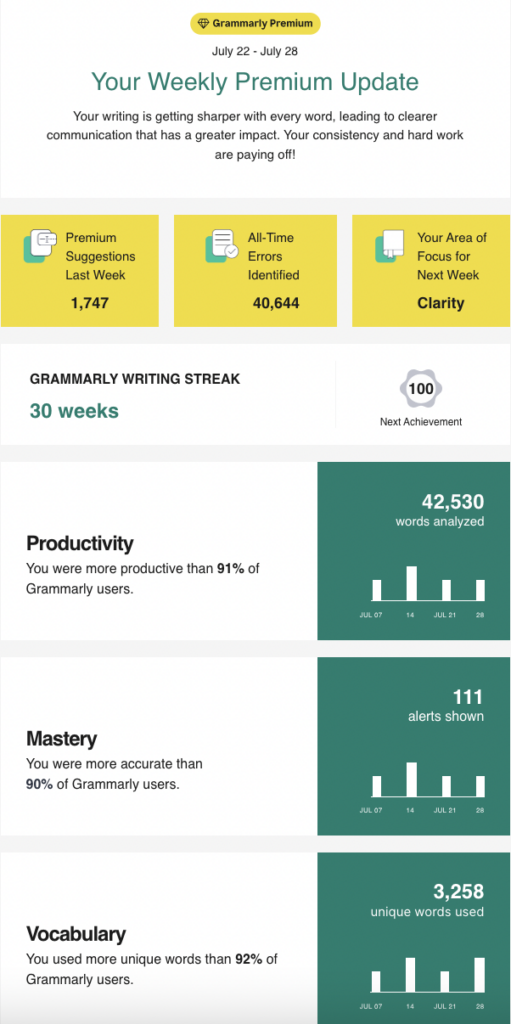
Email Marketing
7. SEO and Content Optimization
Search engine optimization is an essential digital marketing strategy that involves optimizing your website and its content to rank higher in search engine results. SEO campaigns are typically tailored to address the specific needs of your website after an extensive audit.
So you may need a complete website overhaul that includes redesigning your website, boosting its speed, and adding new keyword-optimized content. Or it may involve improving your technical SEO and making some changes to the structure and formatting of your existing content.
The Wix blog was able to significantly boost traffic by adding the “how to” schema to all their posts addressing that particular intent. During May 2022, they added the “how to” schema to 108 of their blog articles. Within just one month, they saw +7,000 clicks to their “how to” URLs. Additionally, there were +2,700 clicks to “how to” queries.
On top of this, Wix managed to gain the featured snippet for their “how to start a blog” article. They continue to hold this position, with organic clicks increasing at over 5,000 a month.
8. Loyalty Programs
Loyalty programs involve rewarding repeat customers with certain benefits such as exclusive discounts, early access offers, redeemable points for their purchases, and more. These are highly successful for retaining your existing customers and encouraging repeat purchases as you make them feel appreciated for choosing your brand.
Depending on the brand, customers can sign up for the program or pay a token fee to participate. They may also be automatically included after they’ve made a certain amount of purchases. This strategy is a great way to encourage people to spend more so they can gain access to better rewards and feel a better sense of exclusivity.
Sephora’s Beauty Insider loyalty program categorizes customers into three tiers. While the basic Insider program is free to join, customers are automatically added to the VIB program if they spend at least $350 a year or to the Rouge program if they spend at least $1,000 a year.
Across all these tiers, customers who are a part of the program get access to benefits such as free standard shipping, Beauty Insider cash, seasonal savings events, end-of-year discounts, and access to auto-replenish.
9. Cause Marketing
Cause marketing involves supporting a certain social or environmental cause to appeal to the sentiments of your audience. This is a highly impactful marketing strategy, especially in a world where consumers have high expectations from brands. A Sprout Social survey found that 72% of consumers expect brands to be positive contributors to society. Meanwhile, 64% expect brands to use their power to help people.
So you can imagine the good it would do for your brand to show your support for a cause that aligns with the values of your target audience. TOMS Shoes is one of the best examples of a brand that does cause marketing right. The brand gained mainstream popularity when they pledged to donate a pair of shoes to a child in need for every pair bought.
TOMS continues to stay true to their values, donating one-third of their profits for good. This involves funding mental health care and access to opportunity for those in need. Additionally, the brand makes a consistent effort to improve sustainability and be a positive contributor for the environment.
Staying true to their commitment, TOMS regularly shares social media content that shows their support for these causes. For instance, they shared the following Instagram post with mental health tips from their Impact Partners.
10. User-Generated Content
Marketing through user-generated content involves leveraging content created by your customers. You may repost the content on your social media, repurpose it for your ads, publish it on your website, and more. These serve as social proof to help you earn the trust of your target audience.
GoPro, for instance, fills their social media pages with user-generated content. This strategy works for them as it enables them to showcase the potential of their cameras in the hands of professionals and everyday users alike.
11. Experiential Marketing
Experiential marketing involves bringing an experience to your customers, often through real-life interactions. This strategy works by getting customers to engage with the brand in a real-world setting. Brands can get really creative with this strategy, with the freedom to make use of events, AR and VR experiences, pop-up shops, AI technology, and many more.
Contrary to popular belief, experiential marketing doesn’t necessarily have to involve physical locations. The Barbie Selfie Generator promoting the 2023 “Barbie” movie is an excellent example. People got to upload their photos to see themselves in the movie’s promotional poster and share the image on their socials.
The AI filter went viral with top celebrities like Rihanna using it. Within just four months of its release in April 2023, it had attracted 13 million users.
12. Retargeting Campaigns
Retargeting campaigns involve the use of retargeting ads to attract people who’ve already visited your website or engaged with your brand. You may use them to get people to complete certain actions or come back for another purchase. This is a highly effective strategy to re-engage high-intent shoppers and encourage them to convert.
You can even take a leaf out of Murshmallow Skin’s book and entice customers to participate in a “Secret Sale.” The brand used social media retargeting to engage existing customers and announce a sale that’s only available to a select few. This immediately catches the eye as it includes an attractive offer i.e., a discount code. Plus, the sense of exclusivity is a great way to encourage people to take action.
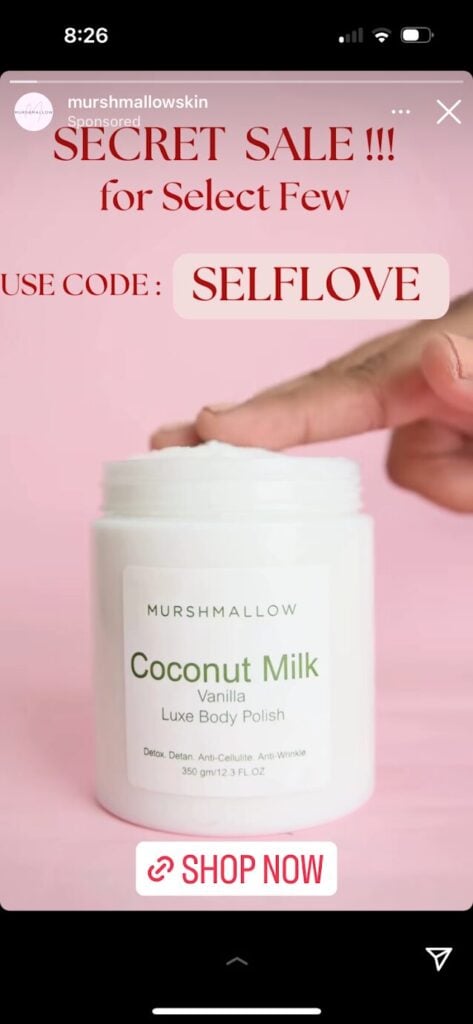
Retargeting Campaign
13. Crowdsourcing Innovation
Crowdsourcing innovation is the process of getting your fans and customers involved in coming up with new ideas and products. You could turn it into a challenge or competition and reward winners with some form of prize. This is a great way to make your audience feel included in the process and acknowledge their contribution.
LEGO Ideas is the perfect example of this marketing strategy in action. The brand has a dedicated initiative in place that allows contributions from fans. LEGO fan designers can submit product ideas and participate in challenges for a chance at turning their creations into real LEGO products.
We know you have a favourite among these 5 amazing contenders! ? So let us know by voting via the link which one you want to see turned into an official LEGO set - https://t.co/wIXAMaqNpL pic.twitter.com/jywT351Nrt
— LEGO® IDEAS (@LEGOIdeas) May 25, 2024
14. Mobile Marketing
Mobile marketing is the process of marketing to mobile users through activities that are optimized for mobile devices. It may involve tactics such as SMS campaigns, mobile ads, QR codes, mobile AR features, location-based targeting, and more.
For instance, convenience retailer Circle K partnered with Niantic to promote their coffee through the latter’s popular real-world game, Pokémon GO. People playing the mobile-based game were shown a Rewarded AR ad displayed as a floating balloon inside the game.
When players clicked on the ad, they could interact with a 3D coffee cup from Circle K. After their interaction, players were encouraged to get a real cup at a nearby location. This resulted in a 76% engagement rate with a 95% average completion rate.
15. PPC Marketing
PPC marketing is the process of marketing your brand and products through ads that you pay for whenever someone clicks on them. It’s a cost-effective approach to advertising as you’re only paying for actual interactions as opposed to impressions. This advertising model can be used on search engines, display ads, and even social media.
Successful PPC marketing campaigns involve the use of well-designed ad creative and copy that resonates with the target audience. Marvel ran a Facebook ad to promote their Marvel Unlimited subscription with a graphic of Deadpool and Wolverine. The ad creative was strategically timed with the release of the “Deadpool & Wolverine” movie and included a caption encouraging people to explore their complicated friendship.
The ad also included a limited-time offer that allowed people to access a 3-month subscription for $3 per month. In addition to the timing of the ad, the attractive offer made it highly appealing to the company’s target audience.
16. Affiliate Marketing
Affiliate marketing involves letting brand affiliates promote your products for you. In exchange for every sale they help generate, they get to earn a commission, which is either a set amount or a percentage of the sale. Affiliate marketing strategies are an effective way to drive sales and conversions while keeping your costs low since you’re only paying for the actual results.
Retail giants such as Amazon have a solid affiliate marketing program in place. Additionally, Lingoda makes use of content creators and affiliates to spread the word about their language learning programs.
In the following video, YouTuber cloudyhills puts together a list of hobbies to try instead of scrolling through the phone. The list includes learning a new language using Lingoda. She includes a link to the website where her viewers can get 20% off on the service.
17. Native Advertising
Native advertising is the use of paid ads that match the content on the platform. The paid media will show up on the user’s feed alongside organic content. In other words, it fits natively on the platform. The main difference is that some platforms will include a “Sponsored” or “Promoted” label in native ads to separate them from the organic content.
For instance, Reuters used LinkedIn to promote the following 2024 Digital News Report as a Promoted post. Since it fits natively with other organic posts, there’s a good chance that the user might engage with it along with other posts on their feed. Plus, it includes an eye-catching graphic with key insights from their finding, giving a glimpse of what’s included in the report.
18. Guerilla Marketing
Guerilla marketing is the use of unconventional methods to attract people or drive sales. The best part about this strategy is that brands can go all out and get really creative with this. It may include everything from art installations and strategic ad placements to space takeovers and drone displays. The more unconventional it is, the more likely it is to garner attention and possibly even become a viral marketing campaign.
For instance, the promo of “Avatar: The Way of Water” included a massive light show over Niagara Falls to celebrate the launch of the movie trailer. The show included a drone display and a projection onto the waters of the Falls, attracting a massive audience.
19. Referral Marketing
Referral marketing is a strategy where brands encourage their customers to recommend their products or services to friends and family. It’s a type of word-of-mouth marketing that leverages the loyalty of your biggest fans. In exchange for their referral, you can offer an incentive in the form of discounts, points, and gift cards.
Dropbox’s referral program is one of the most popular examples. The company offers users up to 16 GB of free storage when they refer a friend. Plus, their friends also get bonus storage.
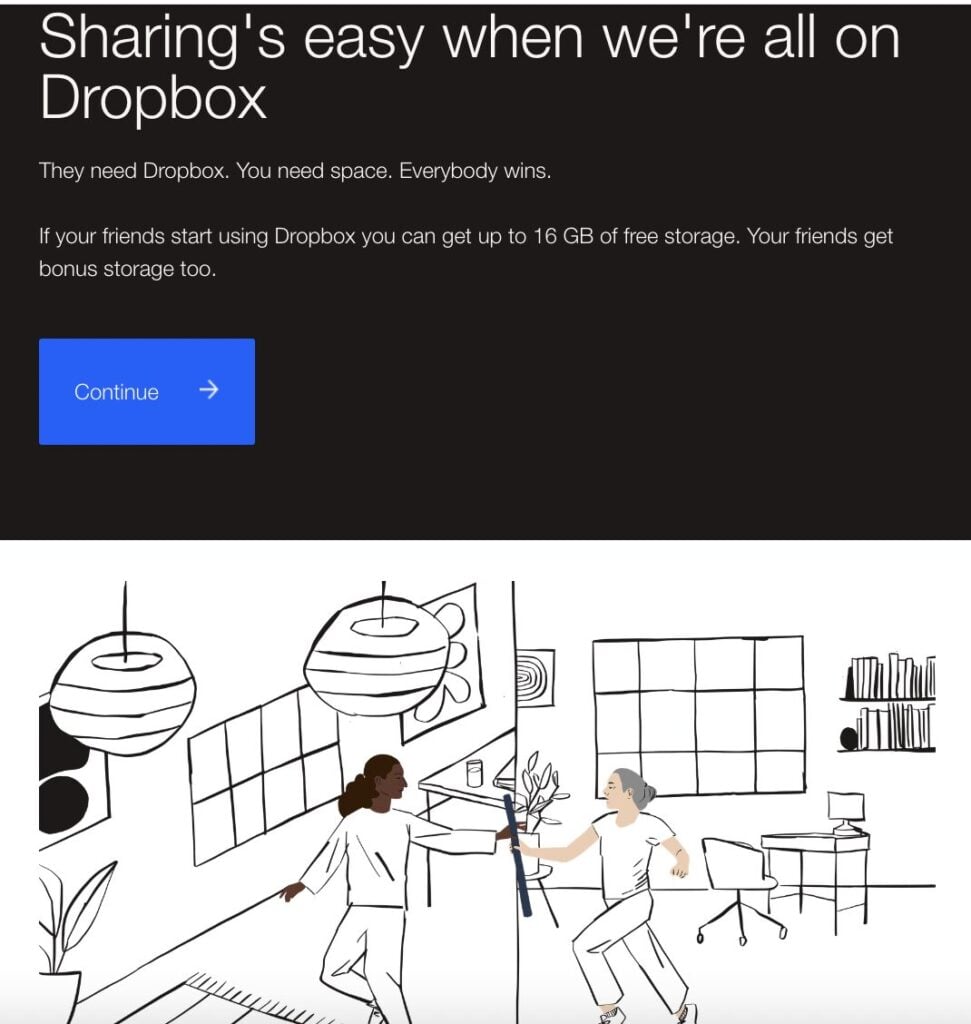
Referral Marketing
20. B2B Marketing
B2B marketing is the process of marketing to other businesses. This is necessary when the product or service you’re offering caters to the needs of businesses. You can employ a number of tactics in your B2B marketing strategy—from thought leadership content and lead magnet ads to webinars and events.
Some of the best B2B marketing examples make use of case studies to establish authority and show proof of their capabilities. Agencies like NinjaPromo regularly publish case studies to show potential clients what they’ve done for other businesses. In addition to the case studies published on their website, they also hand-pick some of the most impressive cases and turn them into original graphics to share on LinkedIn.
If you want to know more about B2B marketing, we have guides on a host of topics, including:
- B2B Influencer Marketing
- TikTok B2B Influencer Marketing
- B2B Influencer Marketing Strategies
- B2B Content Plan for Social Media
- B2B Lead Generation Strategies
- B2B Marketing Trends
Best Practices for Crafting Your Own Marketing Strategy
Once you’re ready to start building a marketing strategy, it’s important to make sure that you’re doing it right. Follow the best practices below to craft a successful marketing strategy that helps you get ahead of your competitors.
Market Research
Researching your target market is an essential part of building your strategy. You need to identify your audience’s pain points and look for opportunities that your competitors are missing out on. See the trends shaping people’s interests, conversations, and buying decisions. Then use those insights to inform the rest of your strategy.
Unique Selling Points (USPs)
How will you differentiate your brand from the competitive landscape? What is your unique selling point? Whether it’s a feature that’s not available in any other product or a unique service that no one else is offering, find a way to set your brand apart to attract your target audience.
Messaging Strategy
Impactful messaging ensures the success of your marketing strategy. Craft your messaging to engage and resonate with your target audience. Use a language that appeals to the audience and promote offers that add value for them. And make sure to keep things consistent across all your marketing channels and touchpoints.
Choosing Marketing Channels
The key to successful marketing is reaching your audience where they are. Whether it’s on a specific social media platform or via email or even through local retail outlets, make sure you’re leveraging the right marketing channels to execute your strategy.
Measuring Success
How do you know whether specific marketing tactics are working? It’s important to clearly define the metrics that matter for your marketing efforts and closely monitor them to measure success. This will help you understand how to fine-tune your strategy to generate a bigger impact. It can also inform future marketing campaigns and boost your return on investment (ROI).
How to Develop a Unique and Creative Marketing Strategy for Your Brand
Having a solid understanding of your audience and your market is the key to developing a creative marketing strategy that’s unique to your brand. You’ll need to see what your audience is responding to and what they expect so you can build a strategy that resonates with them.
Moreover, make sure to see what the competition is doing so you can create something new and unique to your brand. Check out our list of creative digital marketing strategies to find inspiration.
Frequently Asked Questions
What is guerrilla marketing, and how did Bounty use it effectively?
Guerrilla marketing involves surprising people by putting your brand in unexpected places. Bounty used this technique by setting up life-sized “spills” in busy downtown areas of New York, placing hoardings of their paper towels next to the mess to create a memorable and impactful visual message.
How can retargeting help in reducing customer acquisition costs?
Retargeting helps in reducing customer acquisition costs by re-engaging users who have previously shown interest in your products or services. It targets individuals who visited the website, added items to their cart, or made a purchase, reminding them of their interest through strategically-timed alerts via SMS, emails, ads, and pop-ups. This increases the chances of conversions without the need to attract new visitors.
How did GoPro leverage user-generated content (UGC) to build brand loyalty?
GoPro encourages customers to create and share branded videos using their cameras. They facilitate this by adding GoPro branding to each clip through their video editing program. They further incentivize content creation by offering GoPro Awards, which reward the best content with gear, cash prizes, or shoutouts on their official social accounts. This strategy fosters customer loyalty and provides authentic social proof at no extra cost.
How can incorporating user-generated content (UGC) benefit a marketing strategy?
Incorporating user-generated content (UGC) can significantly benefit a marketing strategy by providing authentic and relatable content created by real users. This builds trust and credibility with the audience, encourages community engagement, and can reduce content creation costs for the brand. UGC also often leads to increased social proof and can motivate other users to contribute, amplifying the brand's reach and influence organically.
Why is storytelling important in brand marketing, and how can it enhance customer loyalty?
Storytelling is vital in brand marketing as it humanizes the brand, making it more relatable and memorable. By sharing a compelling narrative that resonates with the audience's values and emotions, brands can create a deeper connection with their customers. This emotional bond fosters customer loyalty, as consumers are more likely to support and advocate for a brand they feel personally connected to. Effective storytelling also differentiates a brand from its competitors and enhances its overall identity.
What does a marketing strategist do?
A marketing strategist develops and executes comprehensive plans to help a brand reach its business goals. They:
- Conduct Market Research: Analyze consumer behavior, market trends, and competitors to pinpoint opportunities.
- Develop Strategy: Craft targeted marketing plans that align with overall business objectives.
- Plan & Execute Campaigns: Collaborate with creative and cross-functional teams to design campaigns across various channels.
- Monitor Performance: Track key performance indicators (KPIs) and adjust tactics based on data insights.
- Facilitate Collaboration: Ensure all teams—from sales to product—work cohesively to deliver a consistent brand message.
In short, a marketing strategist bridges the gap between a brand’s vision and the market, ensuring every campaign drives engagement, awareness, and growth.
